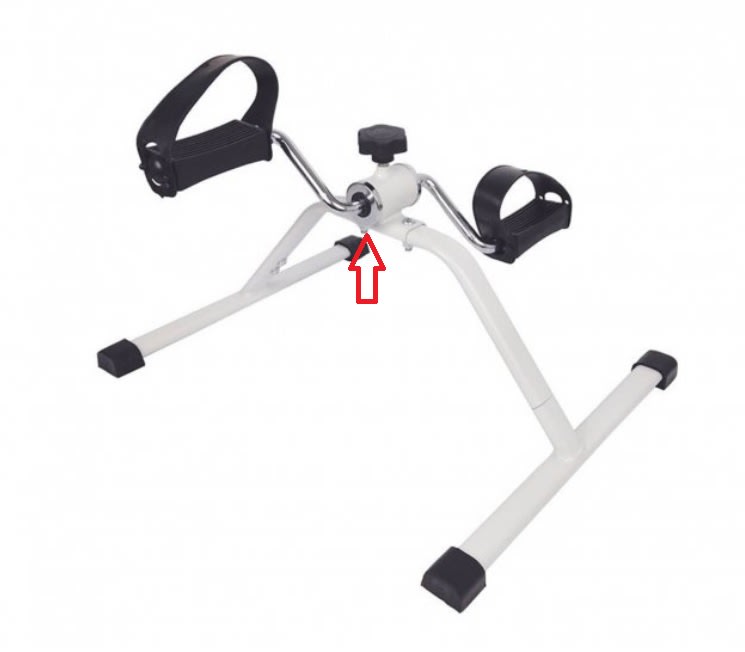Navigation
Install the app
How to install the app on iOS
Follow along with the video below to see how to install our site as a web app on your home screen.
Note: This feature may not be available in some browsers.
More options
Style variation
-
Congratulations MintJulep on being selected by the Eng-Tips community for having the most helpful posts in the forums last week. Way to Go!
You are using an out of date browser. It may not display this or other websites correctly.
You should upgrade or use an alternative browser.
You should upgrade or use an alternative browser.
How does the mechanism of a small stationary bike (without a belt) work?
- Thread starter ValeryV
- Start date
- Status
- Not open for further replies.
- Thread starter
- #2
- Thread starter
- #4
I think there's insufficient volume for eddy-current to work. The price is also too low for that type of mechanism. The cheapest eddy-current bike runs about triple the cost of the bike shown on Amazon.
TTFN (ta ta for now)
I can do absolutely anything. I'm an expert! faq731-376 forum1529 Entire Forum list
TTFN (ta ta for now)
I can do absolutely anything. I'm an expert! faq731-376 forum1529 Entire Forum list
You crank that little knob on top, then go for a sandwich..
Proud Member of the Reality-Based Community..
[green]To the Modelmaker, your nice little cartoon drawing looks cool, but your solid model sucks. Do you want me to fix it, or are you going to take all week to get it back to me so I can get some work done?[/green]
Proud Member of the Reality-Based Community..
[green]To the Modelmaker, your nice little cartoon drawing looks cool, but your solid model sucks. Do you want me to fix it, or are you going to take all week to get it back to me so I can get some work done?[/green]
SuperSalad
Chemical
I can speak from personal experience on this exact model since I bought one at a garage sale a few years ago.
Scuka is exactly right on how it mechanically works (at least initially; more details below). Chicopee is exactly right if you exclude "a good workout" as it warms up instantly (at least initially; more details below).
If anyone were to ask "How does it work?" the answer would be "terribly". It broke after just a few uses and just freewheeled offering no frictional resistance nor heat buildup. It was worth all of the $5.00 I spent on it for entertainment purposes alone though.
Andrew H.
Scuka is exactly right on how it mechanically works (at least initially; more details below). Chicopee is exactly right if you exclude "a good workout" as it warms up instantly (at least initially; more details below).
If anyone were to ask "How does it work?" the answer would be "terribly". It broke after just a few uses and just freewheeled offering no frictional resistance nor heat buildup. It was worth all of the $5.00 I spent on it for entertainment purposes alone though.
Andrew H.
My old elliptical cycle used a friction belt. After we got a new one, I took the old one apart and could see shreds of the original belt remaining; it would have died PDQ had I kept using it.
One thing that's annoying about the friction approaches, of course, is that as you progress, you want to increase the resistance, which makes it wear out quicker.
TTFN (ta ta for now)
I can do absolutely anything. I'm an expert! faq731-376 forum1529 Entire Forum list
One thing that's annoying about the friction approaches, of course, is that as you progress, you want to increase the resistance, which makes it wear out quicker.
TTFN (ta ta for now)
I can do absolutely anything. I'm an expert! faq731-376 forum1529 Entire Forum list
The only way that pushing against the shaft produces resistance is with friction. Bearings pressing on the shaft won't provide enough frictional resistance. Power in = power out, where the input power is the person exercising and the output power is heat dissipation. Low friction bearings pushing on the shaft don't create any heat to dissipate the input power.
SuperSalad
Chemical
3DDave,
It isn't a lack of money getting in the way of that material's development. If it did, motorcycle clutch mfgs. and brake pad mfgs. would have a much improved products. Or were you saying the application of some of the materials used in an application like a automotive brake pad? I would assume the friction pad on this gizmo was probably either a curved piece of metal or a rubber bicycle brake pad.
Andrew H.
It isn't a lack of money getting in the way of that material's development. If it did, motorcycle clutch mfgs. and brake pad mfgs. would have a much improved products. Or were you saying the application of some of the materials used in an application like a automotive brake pad? I would assume the friction pad on this gizmo was probably either a curved piece of metal or a rubber bicycle brake pad.
Andrew H.
SuperSalad
Chemical
Um......ok. I'll assume you meant the latter then. Yeah, it didn't use any expensive material meant for durability. It squealed a lot so I assume metal-on-metal, though that may not necessarily be accurate.
Andrew H.
Andrew H.
- Status
- Not open for further replies.
Similar threads
- Replies
- 6
- Views
- 2K
- Locked
- Question
- Replies
- 3
- Views
- 2K
- Question
- Replies
- 5
- Views
- 3K
- Locked
- Question
- Replies
- 15
- Views
- 9K

